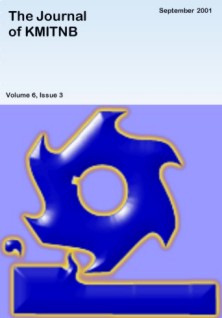ThaiScience
ThaiScience
THE JOURNAL OF KMUTNB
Volume 32, No. 04, Month OCTOBER, Year 2022, Pages 1033 - 1043
Antioxidant activity of salak and soap product development
Sunisa Suwancharoen, Teerapich Kasemsuk, Nuntaporn Moonrungsee, Udom Kurewan, Suttsinee Mekprayoon, Jarassri Oebsapap, Apaporn Boonmee
Abstract Download PDF
Salacca is one of the important economic plant of Thailand of which the fruit processing causes an abundance of peels and seeds as agricultural waste. Therefore, to increase the value of salak peels and seeds, antioxidant activity screening and antioxidant soap product developed from these agricultural wastes were studied in this research. Five cultivars of Salacca genus; Rakam, Salakam, Salamoa, Noenwong, and Sumalee, were determined for an antioxidant activity using DPPH assay. The result revealed that ethanolic extracts by maceration of salak peels showed significantly higher than those from salak seeds (p≤0.05). Sumalee peels’ ethanolic extracts exhibited the highest antioxidant activity which was close to the activity of vitamin C (IC50 1.03 ± 0.04 μg/mL) and higher than those of the seed and plump extracts with the IC50 of 7.93 ± 0.04, 99.22 ± 0.51, and 353.98 ± 1.70 μg/mL, respectively. Moreover, tyrosinase inhibitory activity of Sumalee peel extracts also presented higher activity than the seed and plump extracts with the IC50 of 419.80 ± 3.22, 1821.62 ± 6.69, and >1000 μg/mL, respectively but lower than Kojic acid standard (IC50 1.18 ± 0.24 μg /mL). After Sumalee peels’ ethanolic extracts were mixed in the clear and opaque glycerin soap, the antioxidant of both soap types was detected but less than the ethanol extract before mixing with the IC50 at 351.13 ± 24.74 and 347.56 ± 18.71 μg/mL, respectively.
Keywords
NoneTHE JOURNAL OF KMUTNB
Published by : King Mongkut's University of Technology North Bangkok
Contributions welcome at : http://www.journal.kmutnb.ac.th
